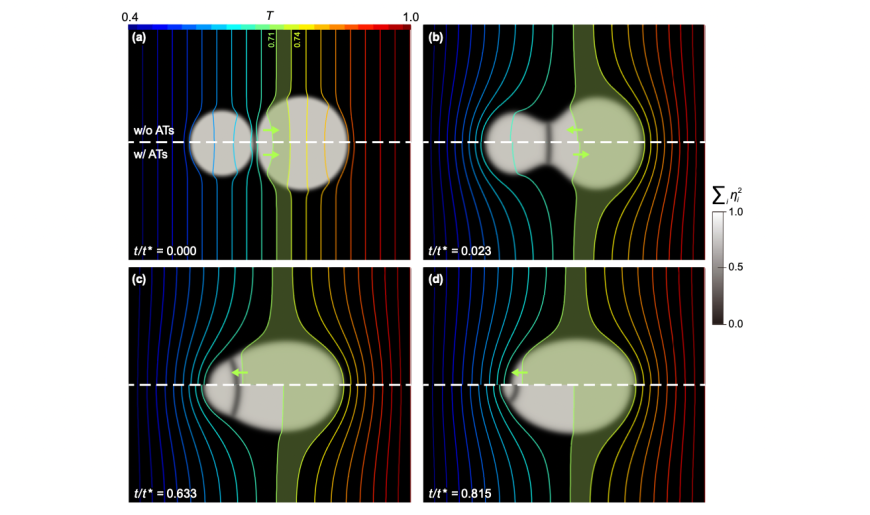Variational quantitative phase-field modeling of nonisothermal sintering process
New Publication in “Physical Review E”
2023/08/07

Authors: Timileyin David Oyedeji, Yangyiwei Yang, Herbert Egger and Bai-Xiang Xu
Phase-field modeling has become a powerful tool in describing the complex pore-structure evolution and the intricate multiphysics in nonisothermal sintering processes. However, the quantitative validity of conventional variational phase-field models involving diffusive processes is a challenge. Artificial interface effects, like the trapping effects, may originate at the interface when the kinetic properties of two opposing phases are different. On the other hand, models with prescribed antitrapping terms do not necessarily guarantee the thermodynamics variational nature of the model. This issue has been solved for liquid-solid interfaces via the development of the variational quantitative solidification phase-field model. However, there is no related work addressing the interfaces in nonisothermal sintering, where the free surfaces between the solid phase and surrounding pore regions exhibit strong asymmetry of mass and thermal properties. Also, additional challenges arise due to the conserved order parameter describing the free surfaces. In this work, we present a variational and quantitative phase-field model for nonisothermal sintering processes. The model is derived via an extended nondiagonal phase-field model. The model evolution equations have naturally cross-coupling terms between the conserved kinetics (i.e., mass and thermal transfer) and the nonconserved one (grain growth). These terms are shown via asymptotic analysis to be instrumental in ensuring the elimination of interface artifacts, while also examined to not modify the thermodynamic equilibrium condition (characterized by a dihedral angle). Moreover, we demonstrate that the trapping effects and the existence of surface diffusion in conservation laws are direction-dependent. An anisotropic interpolation scheme of the kinetic mobilities that differentiates between the normal and tangential directions along the interface is discussed. Numerically, we demonstrate the importance of the cross-couplings and the anisotropic interpolation by presenting thermal-microstructural evolutions.


